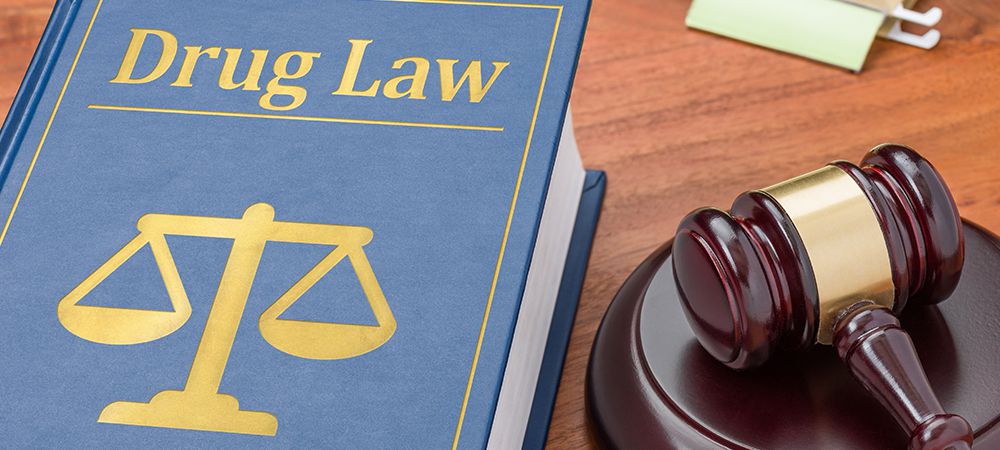Treating Substance Use Disorder During COVID-19
The arrival of the COVID-19 pandemic took the world unawares. Thanks to the unique properties of the virus, daily activities are undergoing a disruption on different scales. Because our world runs on physical interactions and activities, we’ve had to adapt to solve different COVID-related challenges.
Treating substance use disorder during COVID-19 was a major challenge in the health sector. COVID-19’s impact has been substantial because the treatment pattern for substance use disorder relies on physical therapy and counseling.
With addiction issues on the rise in Canada, it’s only right that rehab centres are finding different ways to treat substance use disorder during COVID-19. Here, we’ll take a closer look at treatment for substance abuse during the pandemic.
What is Substance Use Disorder?
Substance use disorder is a drug addiction ailment that affects the brain and behavior of its user. It leads to addiction — the inability to control the legal or illegal use of drugs. Often, addicts continue substance usage not minding the negative physical and mental effects.
Substance use disorders begin with the experimental use of recreational drugs in social situations. This, for some people, becomes more frequent. For others, substance use disorder begins with exposure to prescribed medication.
The risk of substance use disorder varies largely on the type of drug or substance. The distinction is important because some drugs have higher risks of addiction than others. An example of a drug with a higher risk of addiction is opioid. People using opiates as painkillers have higher risks of opioid addiction.
Causes of Substance Use Disorders
Broadly, we classify the causes of substance use disorders into three.
- Psychological causes
- Environmental causes
- Genetic causes.
Psychological causes of substance use disorders
Psychological causes contribute to the bulk of substance use disorders. A few psychological causes appear to start from trauma, especially with young patients. Also, physical or sexual abuse or neglect can lead into psychological stress.
Other psychological causes of substance use disorder include:
- Mental illnesses such as depression, PTSD
- Poor social skills or lack of friends
- Poor performance at school or work
- Poor stress coping mechanisms
Environmental causes of substance use disorders
A person’s environment plays an important role in causing substance use disorders. For instance, people living in environments where drug abuse is permissive have higher chances of addiction. Also, children who grow up in homes with drug addicts often become substance abusers themselves.
The majority of substance use starts in adolescence — most especially those with inattentive, neglectful, or abusive parents. One cause of substance use disorders is the combination of drug experimentation due to lack of parental oversight.
Other environmental factors that can cause substance use disorders include:
- Participation in sports where performance-enhancing substance use is encouraged.
- A peer group that promotes substance use.
- People of lower socioeconomic status are at higher risk of substance use disorders.
- Gender and ethnicity play a major role in causing substance use disorders
Genetic causes of drug addiction
Substance use disorders can also be genetic. It tends to run in families, showing that genes may have an important role in causing substance use disorders.
Genetic causes of substance use disorders appear to involve multiple gene sequences. Although science has not yet been able to track down all the genes involved, experts postulate that some genes in nicotine brain receptors contribute to increasing the risks of substance use disorders.
Relationship Between PTSD and Substance Abuse
Post-traumatic stress disorder (PTSD) is an anxiety disorder induced by a terrible event in one’s life. Common examples are:
- Military combat
- Sexual abuse
- Violence
- Natural catastrophes
- Terrorist attacks
- Flashbacks
- Nightmares
Intense anxiety and despair, as well as uncontrollable and intrusive thoughts about the events causing the PTSD are common symptoms. COVID-19 has also come with added mental pressure for different reasons.
Notable mentions range from stretched finances to grieving the loss of loved ones and the moral agony of global leaders “mishandling” or ignoring the situation. An unprecedented number of people have and will certainly have PTSD as a result of COVID-19’s effects.
A study carried out recently demonstrated the prevalence of PTSD in 30.2% of patients after acute COVID-19 infection. It’s a major concern since healthcare systems are unprepared for the massive influx of patients. Mental health care access has become a complex issue because of social distancing.
The fact that PTSD and substance use disorders are indicators of co-occurring disorders is amplifying the crisis. Individuals who have experienced trauma or post-traumatic stress disorder (PTSD) are more likely to struggle with substance abuse, according to research. According to the U.S. National Comorbidity Survey, 34.5% of men and 26.9% of women who had PTSD at some point in their lifetime also have a problem with drug addiction or abuse.
Related Article: Addiction Treatment During COVD-19
Treating Substance Use Disorder during COVID-19
In a research by the CDC, 13% of Americans started or increased substance use as a way of coping with stress or emotions connected to COVID-19. These numbers mean treating substance use disorder during the COVID-19 pandemic is a must.
The following are three major challenges to treating substance abuse during the pandemic:
- Screening for substance use
- Regulation of drugs
- Access to addiction care
Screening for substance use
Stopping drug and alcohol tests is one of the most significant adjustments due to COVID-19. Urine drug screens and saliva samples for drug screening are among these examinations. These tests increase the danger of the coronavirus spreading since they employ bodily fluids and aerosols.
Toxicology monitoring is also on hold to preserve the safety of patients and healthcare staff. Because it’s a way to monitor substance use disorder, delay in testing has ramifications for patients and treatment teams.
Access to addiction care
Patient and worker safety is a top priority for hospitals and treatment facilities. For this reason, there have been improvements to the environments in which patients receive addiction treatment during COVID-19.
Drug rehab centres are putting drastic measures in place to reduce the spread of COVID-19. Top of the list is reducing patient capacity for addiction treatment programs. The sole aim of doing this is so that each patient can establish a six-foot social distancing gap for group sessions and regular encounters, such as dining together.
Drug Regulation
Relevant authorities are responding to the pandemic by easing rigorous laws governing the distribution of methadone to people suffering from opioid addiction. Typically, patients receive the drug in single doses. Federal regulators have eased regulations — allowing patients with methadone prescriptions to take extra doses home for future use.
Solution: Treatment and Modification of Rehab centers
The following are new approaches for treating substance use disorders during the COVID-19 pandemic.
Telemedicine counseling sessions
Telemedicine describes clinical applications of long-distance technology. A perfect example is diagnosing a patient over the phone. Telehealth and mental health work well together, allowing counselors to conduct sessions electronically.
Addiction treatment centers are using telemedicine to address substance use problems. For persons with impairments or restricted travel capability, behavioural telehealth works best. A major advantage of behavioural telehealth is the ease and comfortability of diagnosis.
Virtual recovery programs
Virtual meetings may not be ideal, but some version of recovery is better than none. Making these meetings accessible to more people will promote recovery from substance use disorder.
The uge need for counseling and past research has shown that failure to get treatment can precipitate relapse in many individuals. It’s therefore possible to reduce relapse rates if patients are getting consistent care, albeit virtually.
Advantages of virtual meeting for treating substance use disorders during COVID-19 include: convenience, comfort at home, and increased accessibility to counseling for patients. Virtual meetings are also cost-effective because they do not require travel.
Experts do cite challenges with technology as one of the perceived downsides. For instance, learning to use new apps like Zoom can be difficult for patients. Distractions at home and a lack of privacy are also important talking points. But most significantly, the loss of emotional connection is a disadvantage of virtual meetings.
Other ways of treating substance use disorder during COVID-19 include:
- Wellness self-assessment and tracking
- Group coaching and links to support communities
- Self-guided mental health and substance use courses, apps, and other resources
Related Article: Is Drug Rehab Safe During the COVID-19 Outbreak?
To Wrap It Up
Treating substance use disorder during the COVID-19 pandemic initially seemed like a difficult prospect. However, we have been able to adapt to outmanoeuvre the effects of the virus.
Currently, treating substance use disorder during the COVID-19 pandemic involves virtual recovery programs and telemedicine counseling sessions. These programs show promising results and are acceptable alternatives to the pre-existing treatment.
Here at Addiction Healing Centre, we’ve been able to modify our addiction treatment services to ensure safety — even during a pandemic. Call us today to discuss possible treatment plans.






